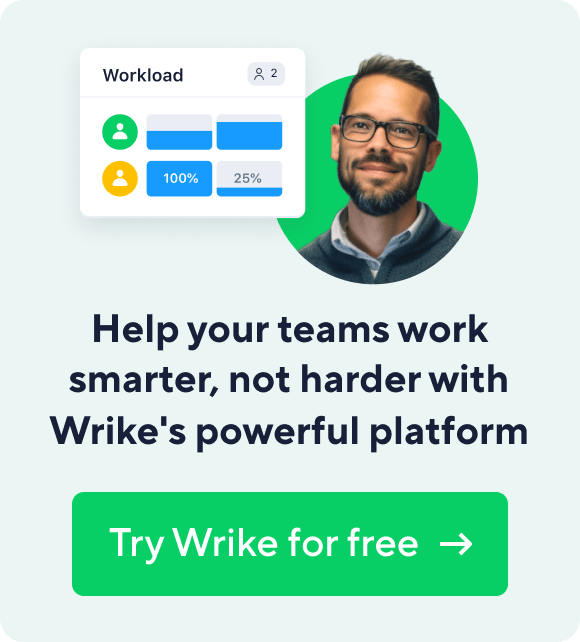On June 27, 2007, at 1:47 pm PDT, Steve Jobs sent an email to all Apple employees asking them to attend a town hall meeting. This was an unusual request. Jobs hadn’t held an all-hands meeting at Apple HQ since returning to the company ten years earlier.
When the time came, employees at the Cupertino campus gathered in the Town Hall meeting area while others huddled together around video screens, eager to hear what Jobs was going to say. The company was on the eve of the launch of the iPhone — a device that would forever change the way much of the world consumes information, creates content, and communicates with each other.
Rumors were flying up until the moment Jobs took the stage. Was this some sort of company-wide pep talk? Had Jobs secured a major deal or partnership?
After laying out his vision of the future for the iPhone, Jobs made an unexpected announcement: Every full-time employee would receive one for free.
Applause erupted across the Apple HQ and its satellite offices. The excitement was palpable. As those units started shipping about a month later, Apple’s nearly 18,000 full-time employees were instantly transformed into one of the largest and most effective marketing street teams ever assembled.
Even the handful of employees who were involved in the product and had prototype models couldn’t help but show them off. It was obvious to everyone that they had created something special, and they were excited to share their work with the world.
Sure, the sexy ads and glowing reviews helped drive iPhone demand, but thousands of passionate evangelists with iPhones in hand may have been one of Apple’s most ingenious marketing maneuvers.
Enthusiasm is contagious and profitable
Research by Gallup shows that employee engagement improves profitability by over 20% and reduces turnover by 59%. Happy and engaged employees are the perfect ambassadors to help spark product adoption, share a company’s message, and improve overall customer experience.
These employees are more likely to go above and beyond to cater to consumers, creating a domino effect of happy and satisfied customers. This is an excellent strategy for customer experience management – improving employee engagement to improve customer experience.
Let’s learn more as we define customer experience management and share tips to improve customer experience and employee engagement.
What is customer experience management?
Customers today have a lot of choices. Product differentiators like price and product are becoming minimum requirements while engaging and creating positive customer experiences is becoming more important. Today’s leading companies know investing in customer experience is the best way to differentiate themselves from the competition. But what is customer experience management? How can you get better at it?
Customer experience management is how a company tracks, manages, and improves customer interactions throughout a customer’s lifetime. It’s a strategy that puts customers at the center of business operations like product design, marketing, sales, and customer support to drive brand loyalty.
Customer experience management prioritizes customer happiness and relies on data from customer-driven initiatives to quantify customer sentiment, which helps provide better experiences. Customer experience management continuously adjusts elements of the customer experience to correct negative feedback and improve outcomes.
Employees can make or break the customer experience
Even the best customer experiences crumble unless they are supported by authentic employee engagement. It’s a critical ingredient that many companies seem to overlook, and it’s costing them big time.
According to a Gallup poll, 68% of workers are disengaged. The effects of disengagement can be felt across an organization, from poor customer satisfaction to increased difficulty attracting and retaining top talent. One study by ADP was even able to attach a dollar amount to the problem — $2,246 per disengaged employee. Gallup took it one step further and estimates the problem costs U.S. business between $450-$550 billion a year.
How to improve employee engagement and create customer experience ambassadors
Ultimately, employees’ customer experience skills make or break the customer experience. Those that interact directly with customers become the face of your brand. But it’s not just front-line employees that can hurt the customer experience — it’s anyone involved in building your products or designing your brand experiences.
When employees are not engaged enough to get full clarity or feedback on their work, they produce off-brand experiences that chip away at your brand. Even a single bad interaction can prove costly. Studies show it takes 12 positive experiences to make up for one negative one, and negative brand experiences are shared twice as much as positive ones.
Given all of that risk, it’s easy to see why many successful companies invest in employee experience as much as customer experience. Engaged employees help delight customers and execute at a higher standard. Here are four tips to improve employee engagement:
1. Align individual, team, and organizational goals
Disney is another company whose employees are some of its biggest fans. Everyone in the company shares a common purpose — to delight their customers through incredible experiences. Disney’s mission statement reads:
"The mission of The Walt Disney Company is to entertain, inform and inspire people around the globe through the power of unparalleled storytelling, reflecting the iconic brands, creative minds and innovative technologies that make ours the world’s premier entertainment company."
Walt Disney himself once said, "Whatever you do, do it well. Do it so well that when people see you do it, they will want to come back and see you do it again, and they will want to bring others and show them how well you do what you do."
They don’t call the members of their workforce employees but "cast members." It’s crystal clear to everyone how their contributions add to the "show." They even receive specialized training to be "show ready" and "assertively friendly." Everyone’s roles align and contribute to that greater mission. Watching Disney employees go about their work is truly inspiring. Not only do they work together to deliver an incredible performance, but they all seem to be having a ton of fun in the process.
You can cultivate engagement by creating nested goals. Align each individual’s tasks with your organization’s mission and goals. Use collaborative work management (CWM) software to provide visibility into the collective work being accomplished.
Sharing organizational objectives helps people understand their roles better, fosters greater intrinsic motivation to do their jobs well, and allows employees to understand how they are directly involved in achieving them. When employees are confused about who owns what, it’s difficult to be truly engaged. Shared dashboards can help everyone understand exactly what each person is directly accountable for. They also encourage people to be more engaged to meet expectations.
2. Put the spotlight on your people
When morale was low at Miller beer, one of the nation’s oldest breweries, company leadership decided to talk to their workforce directly. They conducted an in-depth study and found something surprising: Employees took great pride in the company’s long tradition of brewing. Company mythology was passed down from the old-timers — stories like how founder Frederick Miller smuggled a pocketful of yeast from Germany in 1855, the same yeast strain they use to this day.
They focused on that human element and launched an internal branding campaign. Huge posters of employees were put up around their facilities. Employee-only memorabilia was designed and distributed, celebrating the craft of brewing. The internal buzz and momentum began to spill outward. Miller’s advertising campaigns started to focus on their long legacy of brewing. The commercials, once filled with images of ice and bottles, began to feature authentic employee stories.
People connect with people. Highlight the impact your employees are making and showcase that to your customers and prospects. Humans love rooting for the underdog. Share their authentic stories, reveal their challenges, and highlight their victories. By helping your employees connect and build empathy for each other’s struggles, you’ll build a united and engaged workforce that’s invested in each other’s success.

3. Cultivate amazing leaders and managers
There’s a saying, "People don’t quit jobs, they quit bosses." Company leaders and managers play important yet slightly different roles in cultivating and maintaining employee engagement:
- Executives: Company leadership can impact employee engagement in multiple ways. Executives are responsible for creating, defining, and communicating the company vision, which can help attract and retain engaged employees. Secondly, they select and cultivate managers and supervisors who embody company values and inspire their teams.
- Managers: Managers coach people so that they can reach their full potential. They ensure that their teams’ efforts are aligned with organizational goals, prioritize work, and shield their team from negative influences and distractions.
The common focus of both executives and managers should be communication. In order to fulfill their objectives and do their best work, employees need to understand what the organization’s goals are and the reasons behind the company and team strategy. Not only does this add clarity to their work, but it engages people by making them feel included.
Additionally, employees need to feel that communication is a two-way street. Many organizations have instituted 360° reviews, so management can also receive necessary feedback. Great managers hold weekly 1-1’s with their team, ensuring their voices are heard and their concerns are addressed. They focus on the personal growth of each member of their team and cultivate an environment of psychological safety. When employees trust their managers, are free to voice their opinions and objections, and are confident enough to take risks without consequence, they’re able to do their best work.
Create a culture of leadership and management that prioritizes communication, challenges employees, and gives them the flexibility to work their way.
4. Invest in collaboration tools
So much of our success depends on others. Humans are pack animals, and it’s extremely difficult to perform well in isolation. As the saying goes, we’re defined by the relationships we form. Giving your team the tools they need to not just connect but work together better can help them feel more invested in each other. And according to Metcalfe’s Law, the value of these tools increases as more users are added to the system.
When communication flows freely, people can share insights and alert each other to roadblocks and problems before they get out of hand. But not all collaboration tools are created equal. Between chat tools, notification systems, and plain old email, the level of noise and distraction for managers and teams has skyrocketed. Critical messages — and the context and evolution of thinking behind them — are getting lost in the mix. Technology should free people to focus on more impactful work that carries a higher ROI.
Collaborative work management tools do more than just improve communication — they increase visibility and accountability. They provide context and a record of communication that makes it easy to see how conversations have evolved and where breakdowns are happening. This prevents duplicate work and eliminates distrust when things go sour.
Collaborative tools are also a single source of truth where work can be assigned, housed, and reviewed in one searchable and easily accessible place. Integrations can help capture the natural momentum in chats and emails and transform it into actionable tasks. When everyone can communicate freely and get the information they need when they need it without getting overloaded, they can complete their work more efficiently, which leads to higher levels of satisfaction and engagement.
Top tips for customer experience management
We’ve tackled how to keep employees happy to improve engagement and create internal fans. Now, let’s share some tips to directly improve the customer experience for your products or services.
Get customer feedback
Make it a natural part of your business processes to regularly collect and review customer feedback. This way, you are in touch with what makes your product unique to customers, how they use the product, and what success for your product means to them. When you prioritize customer success, you create opportunities to meet with and hear from them using focus groups, meetups, and surveys to find what they need and value most.
Optimize the onboarding process
The customer onboarding experience can be a great opportunity to delight customers and show off your brand personality. Make an excellent first impression with an easy, user-focused onboarding process. 86% of survey respondents say they’re more likely to stay loyal to a business that invests in welcoming and educating them with onboarding content. Make it easy for customers to see value in the product as soon as they begin using it. A proper onboarding process helps show users around while communicating the value you provide.
Track the right metrics
Establish and monitor key metrics to know how well your customer experience management progresses. Prioritizing your established metrics clarifies what to focus on and prioritize for the best possible outcomes. Important KPIs for improving customer experience include:
- Customer lifetime value (CLV)
- Net Promoter Score (NPS)
- Customer Satisfaction Score (CSAT)
- Customer Effort Score (CES)
- Customer retention rate
- Repeat purchase rate
- Trial to paid user conversion rate
- Churn rate
Use proper customer management tools
To improve customer experience, you’ll need the right tools and software to streamline, automate, and optimize your work and workflows. You need software for customer relationship management (CRM), gathering and analyzing feedback, compiling support requests, monitoring analytics, and many other customer experience-focused functions.
How to improve customer experience with Wrike
The link between engaged employees and happy customers is undeniable. Happy, engaged employees can dramatically elevate the customer experience, impacting your bottom line and keeping the company moving towards its goals. It takes continued investment by the entire organization to keep employees and customers engaged, but it’s an investment with guaranteed returns.
Wrike’s collaborative workspace makes it easy to align all department goals to support the primary aim of delivering a positive customer experience. With a shared dashboard, established metrics, easy communication functionality, approval and sign-off functions, marketing, sales, and other customer-focused teams can collaborate on projects and keep track of customer data.
Are you ready to streamline and optimize customer experience management in your organization? Get started with a two-week free trial of Wrike today.





